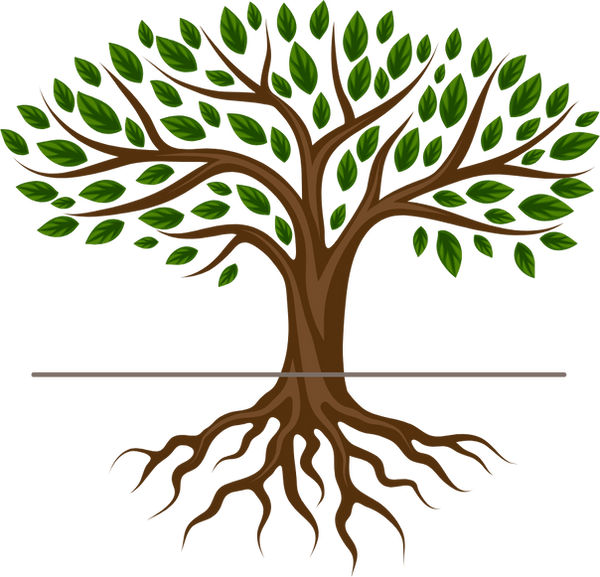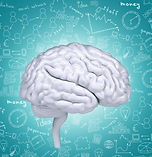
Good to know
Multisystemic diseases like ME/CFS often affect multiple body systems simultaneously—from the nervous system to the immune and hormonal systems to cellular processes . This explains why the symptoms can be so diverse.
Safety Retreat is for everyone who asks themselves: What is happening in my body – and how can I support it myself ?
Safety Retreat takes a new path
®
“You feel that it requires not just pacing – but a deeper understanding?”
Learn how stress regulation, energy metabolism, and symptoms are connected in our 7-week program.
The tree model illustrates simplified symptoms in the crown and possible triggers in the roots.
Recent research suggests that chronic complaints may be related to deeper causes - in particular to a persistent cellular danger state (Cell Danger Response) and the autonomic nervous system.
Our program integrates the latest findings from neuroregulation and mitochondrial research and opens up new perspectives on complex symptoms.
Because if symptoms persist - even though everything has been clarified - a new approach is needed.

Fatigue
Pain
Intolerances
POTS
poor sleep
Post-Exert. Malaise
Brain fog
Digestive problems
Infections
chronic stress
Trauma
toxins
Nutrient deficiencies
ME/CFS, Long Covid, etc.
© 2025 Safety Retreat
You want to know what to expect?
These are the 5 stages of Safety Retreat
®
Knowledge & Understanding
Chronic symptoms - what's behind them?
Cell danger response (CDR)
Mitochondria & Energy Management
immune system
Crash & Pacing

Nervous system &
Neuroplasticity
Polyvagal theory
meditation
Neuroplasticity
Vagus exercises
Mind Body & Subconscious

Mindset & Symptoms
Neuroplastic training
Behavior and attitude
Understanding symptoms
Dealing with symptoms/pain
Recognize thought patterns

Metabolism & Nutrients
Stabilize blood sugar
Dietary supplement
Environmental pollution
Understanding lab values
Nutrition

Epigenetics & Lifestyle
-
Body-oriented techniques
-
Trauma - Introduction
-
Understanding epigenetics
-
Breathing techniques
-
Daily Routines & Sleep

The content is based on general scientific findings from the fields of neurobiology and stress research, but is not part of evidence-based medical guidelines or standard therapy. Further information can be found in the disclaimer.
What is the SAFE method?

S – Sense of Safety
Better understanding your own body and nervous system can provide safety – the foundation for regeneration.
A – Align Your Day
With small, practical steps and routines, knowledge can be transferred into everyday life.
F – Recognizing Factors
Many influences, such as stress, diet, or blood sugar, interact. We show how to classify them.
E – Understanding Energy
We explain how cells work, the role of mitochondria, and how this knowledge can be used practically.

Everything revolves around diagnoses – but no one explains to you how your body actually works?
Safety Retreat makes complex relationships understandable
Typical complaints with:
🟢 Long Covid & ME/CFS, Post Vac
Chronic fatigue, exercise intolerance
Sensitivity to stimuli and much more
🟢 Fibromyalgia
Pain, sleep disorders
Exhaustion and much more
🟢 Irritable Bowel Syndrome (IBS)
Digestive problems, intolerances, stomach pain
🟢 Postural tachycardia syndrome (POTS), circulatory problems, rapid heartbeat when standing up
🟢 Mast cell activation syndrome (MCAS), histamine intolerance, skin rashes
Breathing difficulties and much more
🟢 Sleep disorders
Inner unrest
Difficulty concentrating
🟢 Stress-associated pain
Tension pain
Muscle tension and much more
🟢 Multiple chemical sensitivity (MCS), overreaction to smells, fragrances, environmental stimuli and much more
What is Safety Retreat’s unique approach?
Our program brings together the most important findings from research, practice, and experience . It is based on models from neurobiology, stress research, and cell physiology. These provide new perspectives on chronic stress conditions—but they are not (yet?) part of current medical guidelines.
Neuroplasticity – the scientifically well-documented ability of the brain to change structurally and functionally through experience, learning and external influences.

Polyvagal theory – the neuroscientific theory according to Prof. Stephen W. Porges expands the classic understanding of the autonomic nervous system, especially the vagus nerve, and describes how our nervous system responds to safety or threat – with direct relevance to social behavior, trauma, stress regulation, and physical health.

Cell Danger Response (CDR) – a model developed by Prof. Dr. Robert Naviaux (Prof. of Genetics, Mitochondrial and Metabolic Disease Center University of California San Diego) current cell and mitochondrial research that opens up new perspectives on chronic diseases and impaired regeneration processes.


Stay informed about the release of our English program.
Join our waiting list now, free of charge and without obligation.
Receive our free Introductory Video
from the Safety Retreat program
simply enter email & save info
By entering your email address, you agree that we may send you information about the program via email. You can find further information in our privacy policy.

